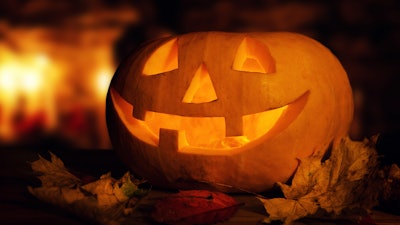
WASHINGTON, D.C. – As families across the nation prepare for Halloween, the U.S. Consumer Product Safety Commission (CPSC) is reminding consumers to focus on safety when selecting and creating costumes and home decorations.
Over the past three years, CPSC estimates that an annual average of 3,200 Halloween-related injuries were treated in U.S. hospital emergency departments.
Here’s how the injuries break down:
- 55% were related to pumpkin carving;
- 25% were due to falls while putting up or taking down decorations, tripping on costumes or walking while trick-or-treating;
- 20% of the injuries included lacerations, ingestions and other injuries associated with costumes, pumpkins or decorations, and allergic reactions or rashes.
Among the injured, 54 percent were adults 18 years and over, 46 percent were under 18 years old, and about 10 percent of all injuries were to children 6 years old or younger.
Fire safety is important year-round, with special awareness during holiday seasons. A new CPSC report estimates that candles and electrical cords/plugs were associated with an annual average of 5,600 and 1,600 fires, respectively, from 2017 through 2019.

Stay safe this Halloween by observing the following CPSC safety tips:
Pumpkin Carving
- Leave pumpkin carving to the adults. Child helpers can grab a spoon and scoop out the inside or use a marker to trace the design.
- When your jack-o’-lantern masterpiece is ready, use battery-operated lights or glow sticks rather than an open-flame candle.
- If using open-flame candles, keep them away from curtains, decorations and other combustibles that could catch fire.
- Never leave burning candles unattended.
Costumes
- Wear a costume that fits and avoid overly long or baggy costumes to prevent trips and falls.
- Costumes with loose, flowing fabrics can also be a fire hazard when close to open flames.
- Reduce fire hazards by choosing costumes made of polyester or nylon fabric and not sheer cotton or rayon fabric. However, any fabric can burn if it comes in contact with an open flame.
- Eye and nose holes in masks should permit full visibility and adequate breathing. Makeup may be a safer alternative to a mask.
- Use reflective tape as a trim for costumes and outerwear to help being seen in lower light. Wearing a brightly colored costume and carrying a flashlight or glow stick can also help brighten the walkways for trick-or-treaters.
Decorating
- Prevent fires by using battery-operated lights and glow sticks instead of candles.
- Pay attention to placement of decorations. To help prevent falls, remove obstacles from lawns, steps and porches when expecting trick-or-treaters.
- Indoors or outside, only use lights that have been tested for safety by a recognized testing laboratory. Check each set of lights, new or old, for broken or cracked sockets, frayed or bare wires or loose connections. Discard damaged sets.






















